Immunity To Change
This Is Why Personal Change Is So Difficult
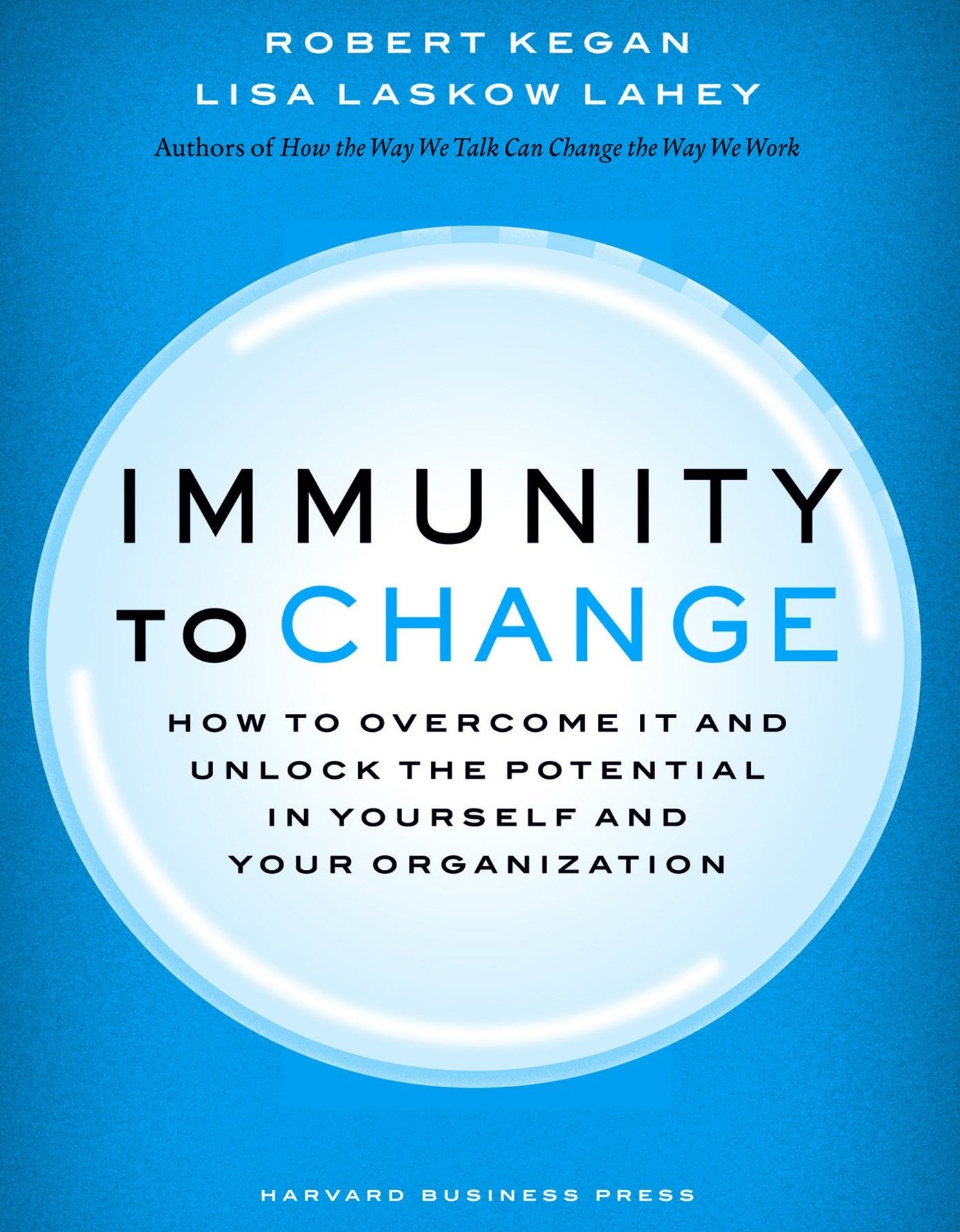
What Is Immunity To Change?
The term "immunity to change" came to prominence in the book: "Immunity to Change. How To Overcome It and Unlock the Potential in Yourself and Your Organization", by Harvard
Graduate School of Education professors Robert Kegan and Lisa Laskow Lahey [2009], in which they address the issue of why personal change is often so difficult.
Their
proposition is that your failure to achieve a personal change goal isn't a lack of willpower, it is the result of an "emotional
immune system" that helps protect you from the negative impacts of
personal change such as disappointment and shame. In summary:
Your failure to achieve a personal change goal isn’t the result of a lack
of will-power, it’s your "emotional immune system" trying to protect
you.
Immunity To Change & The Hidden Commitment
Immunity to change can be defined as a "hidden commitment", with an underlying root cause, that competes and conflicts with a stated commitment to change.
It these hidden commitments that cause people to not change and to fail to realise their best intentions.
Put simply, it is these hidden commitments that cause us to not keep New Year resolutions, to fail with diets, to not stop smoking etc.
Immunity To Change & The 'Knowing Doing Gap'
Kegan and Lahey refer to a "knowing doing gap", or as Kegan puts it:
"...how to close the gap between our intentions, things we actually want to carry out, and what we are actually able to do".
A dramatic and poignant illustration of the "knowing doing" gap can be seen in research in the US healthcare sector. As Kegan explains:
"If you look at people who are prescribed maintenance medications, people who should take, for example, a statin drug for the rest of their lives to control blood pressure or high cholesterol and stay alive, you would assume 100pc of these people would do so, wouldn’t you?
It turns out that research carried out here in Massachusetts shows that anywhere from between a third to a half of all Americans on maintenance medications, who understand why they’re on them, don’t take them after a year."
Kegan concludes:
"They’re usually around things like 'the incentives weren’t high enough'. Someone tells you you're going to die if you don’t make this change; that’s a pretty high incentive, right?"
The Roots Of Immunity To Change
Put simplistically, we can understand the origin of these hidden commitments from two perspectives:
1. The hardware - the physical structure of your brain or more accurately brains.
This video clip outlines the evolutionary background to your brains:
Professor William Irvine - Evolutionary Psychology - extract from Stoicism & Framing
These
thoughts are non-rational and largely driven by survival instincts and
pleasure instincts - sometimes referred to as our "animal nature".
Many of our negative thoughts stem from these regions of the brain - or brains within our brain.
2. The software - the conditioning from our primary caregivers and dominant adult figures in our childhood that creates the thoughts that give rise to our immunity to change.
This is a vast subject and there are many psychological models and interventions used to address and "repair" this conditioning.
For simplicity, if we use Buddhist terminology there are three concepts to frame this:
Samskaras
- impressions created in our minds and thoughts by our actions or, more
damagingly, the actions of others upon us. If these actions are
repeated regularly, they become a habit and are performed largely
unconsciously. The stronger these habits become - as with all habits -
they exercise increasing power.
Anusaya
- latent tendencies which are these deeply ingrained samskara, or
habits of response and thought, and which are largely unconscious.
Samsara
- the cycle of being caught up in perpetual suffering, death and
rebirth. This is often thought of in relation to reincarnation but in
fact describes the hell on earth - in this life - that we create and
endlessly put ourselves through with our samskara and anusaya - or our
"shadow side".
Think of this as a ferris wheel of suffering.
So with this combination of hardware and software in our brains it is a wonder that we ever get anything done!
The resolution of these problems is to bring this resistance/immunity to change into conscious awareness and to frame our proposed personal change objectives in such a way that all areas of our brain can agree.
How To Resolve Your Immunity To Change
The process is very simple - and very powerful for its simplicity - and is based around a four-column exercise.
(1) Set A Goal You Want To Achieve
Identify the areas in your life where you want to make a positive change.
Underneath, list the actions that will help you achieve your goal.
Resource: Make sure that your goal is aligned with your core desire and your point of focus.
(2) List & Review Your Obstructive Behaviours
Make a list of what you are doing and [more importantly] what you are not doing to support that commitment.
Identify and review your actions and behaviours that are stalling your efforts.
Resource: How to become aware of your negative thoughts
(3) Confront Your Competing Commitment
Review the behaviours you listed in column two and ask yourself:
"How would I feel if I did the opposite?".
Examine the fears you face in pursuing your goal for personal change by outlining key concerns in the box at the top of column three.
Then list what you fear will be compromised.
These things are your competing
commitments and the real reason for your failure to achieve your goals.
Resource: As your review these behaviours - check your body's reaction to your mind - this will always give a truthful reflection of what you truly feel.
(4) Challenge Your Big Assumptions
At the root of every competing commitment is a powerful assumption.
This assumption contains and expresses an unconscious belief that your hold.
It is powerful because it is stopping you achieve your goal.
It is this belief that you need to overcome in order to achieve your goal for personal change and make it a lasting change.
A good way of uncovering what lies behind these beliefs [the emotional logic] is to state and write down a “if ____, then ____”
statement for each
Supporting Resources:
Changing core negative beliefs
How to change the way you think
How to change defeatist self talk
Further Resources:
The Real Reason Why People Won't Change
A Four Step Process For Immunity To Change And Achieving Lasting Change
Immunity to Change Diagnostic Test
Reconsidering The Context Of Personal Change
Adaptive rather than technical challenges
The inherent assumption in most training and work-related attempts at encouraging personal change is that it is skills based, in other words people can be taught to change.
They can be taught, but generally they won't change. They can't change and according to Kegan this is because of their inbuilt and invisible immunity to change. (I prefer to refer to this as resistance.)
Cognitive development
There are many developmental models that attempt to map and model the stages of complexity associated with mental development.
It has been assumed that adults don't change - can't change - beyond early adult-hood, that a level of development is reached and remains static.
Kegan & Lahey challenge this and assert that based on their research, adults are capable of continuing development throughout their lives. They identify three qualitatively different dimensions of mental complexity what they call —the socialised mind, the self-authoring mind, and self-transforming mind, each of which interpret the world in different ways.
To explore this model further and more fully understand the theoretical background, please see the following resources:
- "Immunity to Change. How To Overcome It and Unlock the Potential in Yourself and Your Organization" By Robert Kegan and Lisa Laskow Lahey
- "Immunity to Change: An Exploration in Self-Awareness" By Scott J. Allen, Ph.D. Assistant Visiting Professor, John Carroll University Download PDF Here
- "Kegan's Constructive Development Theory" By Professor John E Barbuto - video presentation: View Here
- "Immunity to Change: A Report From the Field" By Jonathan Reams Download PDF Here
- "Immunity to Change - How to Release the Potential of Individuals and Organizations"
2 Case Studies - Download PDF Here
A Personal View
I am well aware that there are many models associated with personal change, and specifically models such as CBT, ACT, CFT, DBT, Schema Therapy etc that are particularly effective when applied by clinical psychologists and other specialist in a therapeutic setting.
I also realise that the immunity to change model may not represent the most current leading edge thinking on this subject, but in my view, as a layperson concerned with practical tools and resources that can be understood and applied in a non-therapeutic context, this is a simple powerful tool for understanding and resolving why we so often find it so hard to achieve our goals for personal change.
Further Resources Related To Organisational Change
Resistance to change - how to deal with it
Dealing with resistance to change
Further Resources Related To Personal Change
How to harness your sunconscious mind and move from passenger to pilot:
Rewiring Your Autopilot – How To Harness Your Subconscious Mind
How to apply the long game approach to your life and sacrifice short term gains for long-term wins:
The Human Brain Did Not Evolve For A Life Of Delayed Gratification
Issues faced in a delayed return environment: the route is often not clearly defined and does not have clear metrics and milestones:
The Challenges Of The Road Less Traveled
Return To: Managing Personal Change
LATEST ARTICLES
The Collison Decision Matrix - A Simple Framework for Better Choices
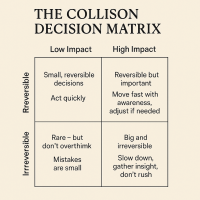 The Collison Decision Matrix Is A Practical Everyday Thinking Tool. Most of us spend a surprising amount of time worrying about decisions. From small ones such as what to wear, what to eat, what to te…
The Collison Decision Matrix Is A Practical Everyday Thinking Tool. Most of us spend a surprising amount of time worrying about decisions. From small ones such as what to wear, what to eat, what to te…The Power Of Asking The Right Question
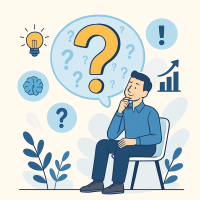 The Power Of Asking The Right Question Lies In The Quest For Insight. To experience the power of asking the right question you must develop the practice of asking questions. The best way to improve th…
The Power Of Asking The Right Question Lies In The Quest For Insight. To experience the power of asking the right question you must develop the practice of asking questions. The best way to improve th…Site Pathways
 Here is a site pathway to help new readers of Zen-Tools navigate the material on this site. Each pathway is based around one of the many key themes covered on this site and contain a 150 word introduc…
Here is a site pathway to help new readers of Zen-Tools navigate the material on this site. Each pathway is based around one of the many key themes covered on this site and contain a 150 word introduc…How To Live With Contradiction - Beyond Thought Let Stillness Speak
 A major impact on so many peoples' lives is the situational contradiction of unfilled realistic expectations. So where does all this leave us? Well here we are, with mental equipment that is more lim…
A major impact on so many peoples' lives is the situational contradiction of unfilled realistic expectations. So where does all this leave us? Well here we are, with mental equipment that is more lim…How To Trust The Process Of Mindfulness - Right Now
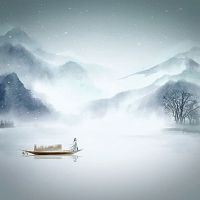 In mindfulness, the process isn’t some distant goal — it's what is happening right now. When we talk about how to trust the process of mindfulness the credibility of the process is heavily dependent…
In mindfulness, the process isn’t some distant goal — it's what is happening right now. When we talk about how to trust the process of mindfulness the credibility of the process is heavily dependent…Inner Mastery For Outer Impact - Mental Clarity For Effective Action
 Insights only matter if they translate into consistent action. In a world crowded with quick fixes and motivational soundbites, the theme “Inner Mastery for Outer Impact” calls us to something more e…
Insights only matter if they translate into consistent action. In a world crowded with quick fixes and motivational soundbites, the theme “Inner Mastery for Outer Impact” calls us to something more e…The Wise Advocate - Helping You Achieve The Very Best Outcome
 The focus of your attention in critical moments of choice either builds or restricts your capacity for achieving the best outcome. When we talk of 'The Wise Advocate' its easy to think of the consigl…
The focus of your attention in critical moments of choice either builds or restricts your capacity for achieving the best outcome. When we talk of 'The Wise Advocate' its easy to think of the consigl…Trust The Process - Beyond The Cliche
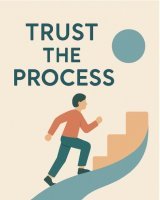 The phrase "trust the process" has become a cliche, the woo-woo mantra of the "self help" industry. Those three little words feel like they ought to mean something useful but hidden behind them are a…
The phrase "trust the process" has become a cliche, the woo-woo mantra of the "self help" industry. Those three little words feel like they ought to mean something useful but hidden behind them are a…The Dopamine Delusion - Why Anticipation Beats Achievement
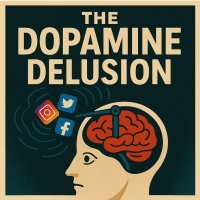 The thrill we feel is not in the having, but in the wanting. The more we have, the more we want. The more things we acquire and the easier things get for us, the more discontent we feel. The more spo…
The thrill we feel is not in the having, but in the wanting. The more we have, the more we want. The more things we acquire and the easier things get for us, the more discontent we feel. The more spo…The Power Of Silence Is Experienced In Your Use Of Language
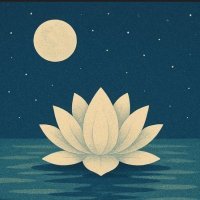 Practise the "Beneficial Neurological Delay" for optimal comprehension. The power of silence is experienced in your use of language, specifically: - How you formulate the words you use to think and in…
Practise the "Beneficial Neurological Delay" for optimal comprehension. The power of silence is experienced in your use of language, specifically: - How you formulate the words you use to think and in…Dealing With Setbacks - 5 Questions To Help You Face Discomfort
 How To Counter The Cognitive Shock Of A Setback. Setbacks challenge your instinctual desire for control and comfort, making it unnatural to respond with calm or acceptance. The reason for these instin…
How To Counter The Cognitive Shock Of A Setback. Setbacks challenge your instinctual desire for control and comfort, making it unnatural to respond with calm or acceptance. The reason for these instin…Why Praxis Is The Key To Living A Successful And Stress Free Life
 Praxis Is The Process Of Taking Informed Action To take informed action you need to be prepared with information, knowledge, education and insight. Informed action is objective action that: - Seeks to…
Praxis Is The Process Of Taking Informed Action To take informed action you need to be prepared with information, knowledge, education and insight. Informed action is objective action that: - Seeks to…